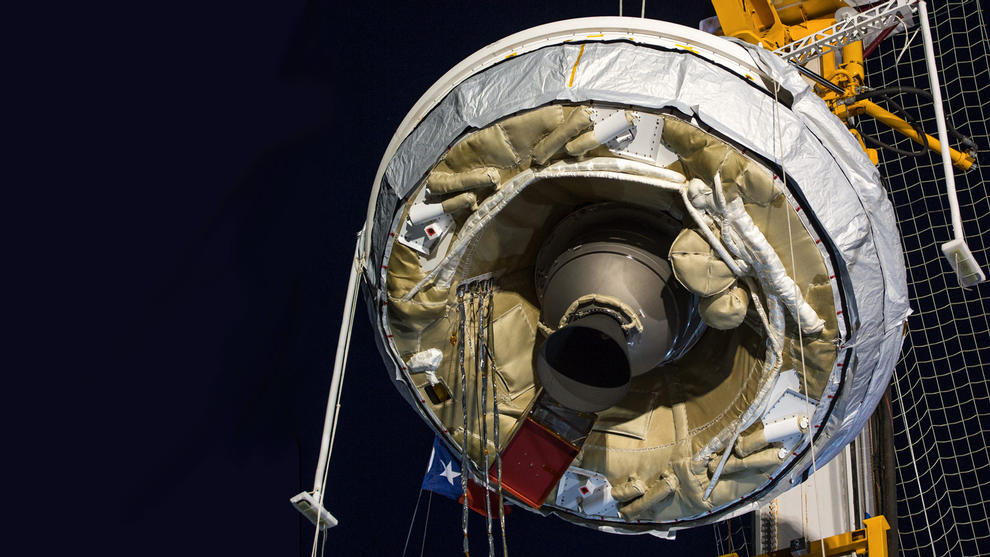NEWS | June 9, 2015
NASA to Hold Briefing to Discuss Status of 'Flying Saucer' Test

NASA's Low-Density Supersonic Decelerator (LDSD) project completed its second flight test when the saucer-shaped craft splashed down safely Monday in the Pacific Ocean off the coast of the Hawaiian island of Kauai. A post-flight media teleconference will be held at 10 a.m. PDT (1 p.m. EDT / 7 a.m. HST), Tuesday, June 9 to review the test.
Briefing participants are:
*Steve Jurczyk, associate administrator for the Space Technology Mission Directorate at NASA Headquarters in Washington
*Mark Adler, LDSD project manager at NASA's Jet Propulsion Laboratory in Pasadena, California
*Ian Clark, LDSD principal investigator at JPL
Audio of the teleconference will be streamed live at:
LDSD launched at 10:45 a.m. PDT (1:45 p.m. EDT / 7:45 a.m. HST) from the U.S. Navy's Pacific Missile Range Facility using a large scientific balloon. After it was carried to an altitude of nearly 120,000 feet, the LDSD test vehicle separated from the balloon. An onboard rocket motor ignited and continued to carry the vehicle to nearly 180,000 feet.
Two advanced decelerator technologies -- a supersonic inflatable aerodynamic decelerator and a supersonic parachute -- were tested. The supersonic inflatable aerodynamic decelerator deployed and inflated. The supersonic parachute also deployed, however, it did not perform as expected. Data was obtained on the performance of both innovative braking technologies, and the teams are beginning to study the data.
The LDSD project is one of several cross-cutting technologies NASA's Space Technology Mission Directorate is developing to advance the critical technologies required to enable future exploration missions to destinations beyond low-Earth orbit, including an asteroid, Mars and beyond.
LDSD testing is conducted through NASA's Technology Demonstrations Missions program, based at the agency's Marshall Space Flight Center in Huntsville, Alabama, with technology development work and testing led by JPL. NASA's Wallops Flight Facility in Virginia coordinated range and safety support with the Pacific Missile Range Facility and provided the balloon systems used to launch the LDSD test vehicle.
For more information on LDSD, visit:
For more information on NASA's Space Technology Mission Directorate, visit:
Joshua Buck
NASA Headquarters, Washington
202-358-1130
jbuck@nasa.gov
DC Agle
Jet Propulsion Laboratory, Pasadena, Calif.
818-393-9011
agle@jpl.nasa.gov
Kim Newton
Marshall Space Flight Center, Huntsville, Ala.
256-653-5173
kimberly.d.newton@nasa.gov
